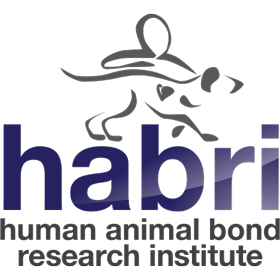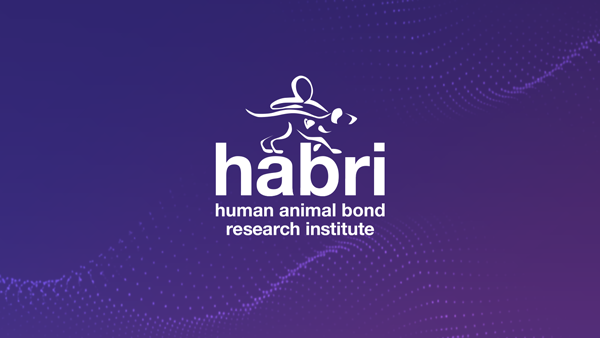April is Autism Awareness Month, and HABRI is taking this opportunity to raise awareness of the many scientifically-documented ways the human-animal bond can benefit individuals with autism spectrum disorder (ASD).
Research shows that pets in the home can improve prosocial behaviors in children with ASD by providing companionship, unconditional love, and improved mental health[1]. Evidence also supports the incorporation of animals into educational and classroom settings as beneficial for improving social skills and behavior in children with ASD[2].
While research predominantly focuses on the impact of dog ownership and interaction for this population, scientific evidence, including recently published results from HABRI-funded research, shows that individuals with ASD can benefit from owning and interacting with other types of animals as well.
Cats
The calmer, quieter temperament of a pet cat may be beneficial for a child with Autism. The Feline Friends Study, placed temperament-screened shelter cats with families of children with ASD to study children’s social behavior and attachment to the cat. Findings demonstrate that children with an adopted shelter cat had better empathy and less separation anxiety. They also showed fewer problem behaviors exhibited by less externalizing, bullying and hyperactivity/inattention. Children and parents also felt strong bonds with their new cat almost immediately after adoption. Despite the responsibilities involved in caring for a cat, these bonds did not decrease over time. HABRI hopes this research will help inform families of an additional, suitable option for a companion animal in their household[3].
Horses
Research suggests that routine interaction with horses can help facilitate better outcomes for children with ASD. A study of young children aged 4-8 with autism participating in equine-assisted occupational therapy, which includes riding in addition to other activities such as grooming and feeding, found that the children significantly improved their engagement, or ability to stay involved in the present moment with others, after participating in the weekly intervention. Teachers and parents of the participants reported better classroom and home behavior, which were consistent even during post-intervention follow-up[4].
Small Animals
Scientific evidence also supports interactions with small animals such as guinea pigs for children with autism. A study which examined the impact of an 8-week program incorporating guinea pigs in classrooms of young children with autism found that participants demonstrated more social approach behaviors (talking, looking at faces, making tactile contact), and received more social approaches from their peers in the presence of the guinea pigs compared to toys. They also displayed more prosocial behaviors and positive affect (smiling, laughing) and less self-focused behaviors and negative affect (frowning, crying) in the presence of the guinea pigs versus the toys. These results suggest the presence of an animal can significantly increase positive social behaviors in a child with autism[5].
Dogs
Dogs can make wonderful pets for families of children with ASD and research is helping improve our understanding of these benefits. One study found that the long-term presence of a dog in the home significantly improved family functioning compared to those without. The study also found a reduction in parent-child dysfunctional interactions among families that had a dog[6].
Incorporating dogs into educational environments for people with ASD has also been shown to be effective. Findings from a study of teens with ASD showed that the inclusion of dogs in social skills training was more effective than traditional programs. Specifically, participants who received the animal-assisted social skills intervention exhibited fewer social skills deficits overall, fewer restricted and repetitive behaviors, and more typical social communication following the intervention. The study also found that participants who received the animal-assisted social skills intervention exhibited a greater level of change in social skills, perspective taking, theory of mind, and decreased feelings of isolation and depression[7].
Learn More about the Human-Animal Bond for Autism Spectrum Disorder
For an in-depth overview of the research supporting the human-animal bond for children with Autism, please visit HABRI’s autism research page.
For Autism Awareness Month 2021, HABRI and IDEXX are holding a virtual lecture focused on the Feline Friends study results supporting shelter cat adoption for children with autism. To watch this lecture as it is broadcast live, please register at https://habri.org/hab-lectures.
To stay informed on the latest from HABRI, including updates on the latest news relating to the Human-Animal Bond, recently published studies, and the publication of HABRI-funded research, please sign up for the HABRI Newsletter or follow us on Facebook, Twitter, Instagram or LinkedIn.
References
7.





